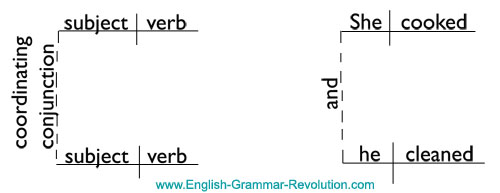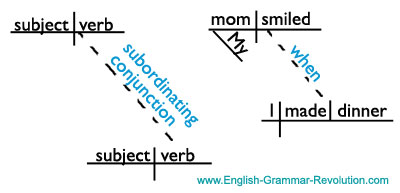SALE! USE CODE DIGITAL30 AT CHECKOUT FOR 30% OFF DIGITAL COURSES & EBOOKS
SALE! USE CODE DIGITAL30 AT CHECKOUT FOR 30% OFF DIGITAL COURSES & EBOOKS
Complex Sentences & Compound Sentences: How To Tell The Difference
Complex Sentences & Compound Sentences:
How to Tell the Difference
- Home
- Sentence Structure
- Compound vs. Complex
Have you ever wondered how to tell the difference between complex sentences and compound sentences? I struggled with this concept when I was learning grammar, and I know that you might be struggling with it as well.
But first, let me describe the issue so that we're all on the same page! Take a look at these two sentences.
1. I washed my hands, and I ate breakfast.
2. I washed my hands before I ate breakfast.
They differ by just one word (and/before), and that word changes the structure of the sentence.
One of those sentences is compound, and one of them is complex. How can you tell the difference? First, let's review what compound and complex sentences are.
Compound Sentences
Independent clauses are groups of words that have a subject and a verb, and can stand alone as complete thoughts. When we join two or more independent clauses together, we have a compound sentence.
She cooked and he cleaned. (Compound Sentence)
She cooked. (Independent Clause)
He cleaned. (Independent Clause)
and (Coordinating Conjunction)
Did you notice that the independent clauses above are connected with a coordinating conjunction (and)?
All of the clauses in a compound sentence are equally important, and the coordinating conjunction does nothing to change the rank of the clauses. The clauses express related thoughts, and neither clause is more important structurally.
The only function of the coordinating conjunction is to connect the clauses and indicate a very simple relationship between them.
There are only seven coordinating conjunctions, and memorizing them is a fantastic idea. They are for, and, nor, but, or, yet, so. (Think FANBOYS.)
When we diagram compound sentences, we can really see the relationship between the clauses. We can see that the clauses have equal structural importance. Check it out.

Complex Sentences
These are formed from one independent clause and at least one subordinate clause. This means that the clauses in a complex sentence are not structurally equal. The clauses express related thoughts, but one clause acts as the foundation of the sentence. Here's an example.
Complex Sentence --> My mom smiled when I made dinner.
Independent Clause --> My mom smiled.
Subordinate Clause --> when I made dinner
Subordinating Conjunction --> when
Subordinating Conjunctions
Subordinating conjunctions connect certain types of subordinate clauses to independent clauses, and they actually subordinate - or demote - the clause that they are introducing. The function of the subordinating conjunction is to connect the clauses and indicate a dependent (complex) relationship between them. As you'll see below, the dependent clause actually modifies part of the independent clause.
Look at the subordinate clause when I made dinner. If we take away the subordinating conjunction when, it becomes the independent clause I made dinner. It might help to think of these conjunctions as "subordinators." Not only do they connect clauses, but they also subordinate the one that they are introducing!
There are many, many subordinating conjunctions, so memorizing them would be a giant task. Here are a few examples for you: after, because, if, since, when, while.
Diagramming complex sentences helps us to understand the function of
subordinating conjunctions. Diagrams make it easy to see that one clause
is more important than the other.
You can see that the whole dependent clause is functioning as an adverb modifying smiled.
You can see that the subordinating conjunction is connected to the
subordinate clause. It is connecting the clauses, and it is
subordinating the dependent clause.

Read more about subordinating conjunctions here.
Summary
Students are able to pick out the clauses (elegantly represented by blah blah blah in the example above), but they have trouble figuring out whether the sentence is compound or complex. They don't know enough about the word doing the connecting. That word is the key to the difference between compound and complex sentences.
I left out the last sentence of Udaya's question because she gave away the answer. Here it is.
Should I tell my students that a sentence's structure can be determined based on the type of conjunction it has?
- If two clauses are connected with a coordinating conjunction, it's a compound sentence.
- If two clauses are connected with a subordinating conjunction, it's a complex sentence.
Learn or teach grammar with our Get Smart Grammar Program!


Hello! I'm Elizabeth O'Brien, and my goal is to get you jazzed about grammar.
I
gave my regular ESL class yesterday, and I knew how to answer a
question about dependent clauses and another about participles being
used as adjectives. This was in my more advanced class. Hurray!
- Lana, ESL Teacher
This is original content from https://www.english-grammar-revolution.com/complex-sentences.html
Our Free Guide Gives You A Fun Way
To Teach And Learn The Basics v

Elizabeth O'Brien is the creator of Grammar Revolution.
Her lessons are guaranteed to give you more confidence in your communication skills and make you smile. :)

